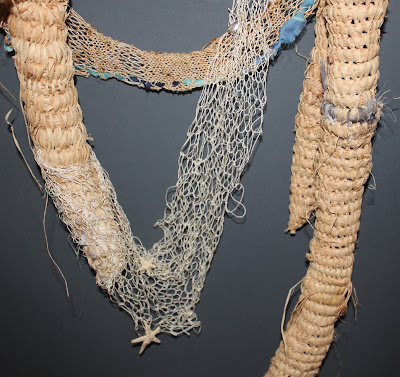 |
| Sharon Peoples 2019 |
 |
| Sharon Peoples 2019 |
 |
| Sharon Peoples 2019 |
 |
| Sharon Peoples 2019 |
Still Waters
Sharon Peoples
In January 2019 I spent four weeks as artist in residence at the Tuggeranong Arts Centre. My project was to work on ideas about gardens in the area. The residency was a springboard for thinking and in subsequent months a new body of work was assembled. It is not the terrestrial gardens that is the focus, rather other blooms that are the subject of Still Waters.
Canberra is often seen as a city that is entirely designed with little organic growth, although that seems to be loosening, socially and design-wise. And perhaps in other unintended ways. Nature has its own way of indicating the limitation of design. The environment cannot be fully controlled.
On my walks during the residency, I pondered the beautiful extensive landscapes at each turn in the path around the lake, admiring the designer’s skill at framing the water, hills and mountains. I revelled in the general quietness but was puzzled by the lack of interaction with the water during the peak of summer.
The still waters of Lake Tuggeranong in the early Summer mornings are glorious. Becoming more familiar with the Lake during the residency, details caught my eye: the birds, the occasional dead fish, the water reflections, the plant life. I revelled in the general quietness with bird calls as a backdrop, until I realised the only interaction by humans with the Lake were two men who regularly motored a small boat to the top end of the Lake.
I subsequently came upon an area of blue/green algae and quickly realised the connections behind the tranquillity and the inhibition of use. Blue/green algae has made it presence felt on the Lake. Its reverberation felt downstream no doubt. The organic growth of the city is perhaps not what was imagined.
I later learned that the men were scientists and were checking the water readings in an effort to understand the source and typology of the toxic algae. A small area in the water was fenced off by rope with orange floats. Once they finished their work for the day silence returned.
In the exhibition the larger lace works, which are machine embroidered, reflect fragility of the environment. For the smaller hand embroidered pieces, I use darn stitching as a metaphor for repair: repairing the environment. In these works, I particularly used cotton thread to link climate change with industrial crops, such as cotton. Layered within the use of the glass cases is the assistance glasses give to our vision. As well the ability to open and shut the cases at will.
Gallery 1
Tuggeranong Arts Centre
137 Reed Street, Greenway ACT
137 Reed Street, Greenway ACT
 |
| Sharon Peoples |
 |
| Sharon Peoples |














